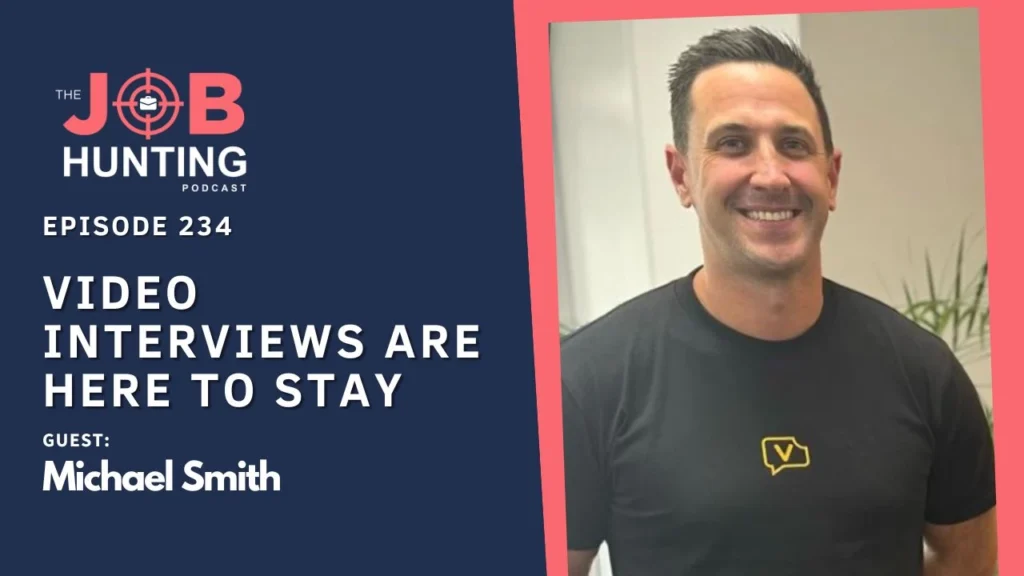Hello, welcome back to the job hunting podcast, where we talk about career strategies and leadership and navigating the complexities of today’s workplaces, which never stops, you know, and they’re always there making us have these amazing conversations. I always have topics to discuss with you every week.
So if you’re not yet subscribed, Find a way to click that bell and subscribe and follow this podcast or wherever you found this. I’m Renata Bernardi. I’m a career coach. And today I want to discuss something that’s been making headlines lately. The fact that Amazon’s decision to bring all employees Back to the office five days a week has kick started yet again this conversation about hybrid workplaces, remote work, where do we perform better, why is it that we’re not performing when we’re working from home, you know, I’m not sure about that, but you know, I’d be interested to know how you feel about it.
So make sure that you’re following me on LinkedIn or other social media channels so that we can continue this conversation. Because when I’m talking to you here on the podcast, it’s just me talking, but I am dying, dying to know what you’re thinking about all of this. For many companies and employees, hybrid and remote work have become the norm since the pandemic back in 2020.
However, Yasmin, Now know, recently Amazon CEO Andy Chessie has announced that come January 2025, the company will require its corporate employees to work from the office full time, five days a week. Now this marks a stark shift from the previous hybrid model that we have been adopting, um, for the past four or five years, which allowed employees to work remotely up to two days a week, sometimes three days a week.
from home. And the Amazon CEO claims that full in person collaboration leads to more creativity, mentorship and innovation. He’s adamant that Amazon’s work is going to be better when teams are together physically, citing stronger team dynamics, spontaneous idea sharing and more effective problem solving.
I find this really ironic coming from a company like Amazon that works basically by luring us to buy everything online and never stepping our foot into a real store. Don’t you think that’s kind of ironic? Like, you know, I’m here trusting that this shoe will fit me, that things will arrive at my doorstep, that this jacket will fit me.
And then they’re saying, well, but no, but we need to work from, from the office. I just, the irony of it all, it really, you know, I find it gobsmacking. Amazon is also investing heavily in office spaces to make this transition smoother for employees. I don’t know exactly what that means, but I would be very interested to see if this is us going back to the office.
The office space being this sort of, you know, uh, places that people can relax and have all sorts of food and ping pong tables and the things that we now know employees don’t value as much as employers thought they did because the employee value proposition has really shifted. It has shifted since the pandemic.
So we don’t want the long commutes. We want to live wherever we want to live and we want to work from home. That’s what I hear from my. from my clients. Maybe I’m working with a biased group of people. I don’t know. You tell me. I mean, this podcast reaches thousands and thousands of people all around the world.
So I’m really fascinated and I know that there will be people that are more keen to work in the office, but I hardly ever come across somebody that wants to work from the office five days a week these days. So, is this really the future of work? I don’t think so. In fact, I do believe that hybrid work is here to stay, and forcing employees back to the office full time is not a sustainable, long term strategy.
And I think that there is enough research to back me up. Let me explain why. I want to talk to you about the rise and the importance of hybrid work in the context of corporate professionals. I know that this is not for all of you. If you are You know, um, uh, frontline workers in hospitality, tourism, of course, you have to work from your place of employment.
But for many of us who work behind a computer, that’s not the case. We’ve all experienced the shift to remote work over the past few years. And for many employees, this flexibility has been a game changer, especially for For people from diverse backgrounds with disabilities for women as well. Um, uh, in parents in general, I can’t go on and on about, you know, how many of my clients have embraced this opportunity to better manage work life balance.
People have really enjoyed the benefits of better work life balance, reduced commuting time, the ability to tailor their work environment to their personal preferences. And the data shows that productivity hasn’t suffered as a result. Now, I know that we don’t have longitudinal data. Um, I mean, not as much as we want to.
It’s only been four years that hybrid and remote work has really, uh, expanded above and beyond the traditional. Industries where it used to be common practice, like IT, for example. In fact, many employees have reported feeling more productive working from home. So why would a company like Amazon, known for innovation, known for people Keeping people at home shopping from home revert to an old model of in person work.
While there’s something to be said about in office collaboration, the reality is that the world of work has evolved. Hybrid work models where employees split time between home and office allows for a balance of in person interaction and the flexibility employees are craving, forcing employees back full time.
It’s not likely to, um, improve productivity if it will cause dissatisfaction, but could also lead to higher turnover rates. We’ve seen that at Tesla when that was, um, uh, a policy established at Tesla a year or so ago. And especially among those who have already adjusted their lives around flexible work.
I have clients in the U. S. in the Pacific Coast that have moved out of, um, Big cities like Seattle or San Francisco or Los Angeles and are living just outside and you know, better, um, suburban areas for their families or smaller towns for their families with a longer commute because they’re not doing that commute five days a week if they had to do it five days a week, they wouldn’t want, uh, to live where they are, they would probably have to go back into those big towns, probably living in apartments or smaller houses and that would be very unsatisfactory for them.
Then there’s this, this um, thing I want to talk to you about, about leadership and, and the social technical systems theory. Now that’s when I’m using research to back up my argument that hybrid work and remote work is here to stay. One of the key frameworks that I discussed in that boardroom presentation that I did for senior executives here in Melbourne is the socio technical systems theory.
It’s a concept that was developed decades ago, but it’s incredibly relevant today, and it has been relevant ever since. Every time that technology has affected our work environment, this theory emphasizes that for an organization to be functioning optimally, there needs to be an alignment between social systems, like employees and their teams, and And the technical systems, like communication tools, workflows, and technologies.
In a hybrid working environment, this alignment becomes even more critical. It’s not just about providing the right tools for remote work. It’s about integrating those tools. Into a team’s daily interactions and ensuring that employees are still feeling connected and engaged, even when working from different locations.
So this is why I felt that that boardroom briefing that I gave here in Melbourne was so important because here we are. Um, allowing employees to work from home, giving them all the technology they need to work from home, but our leaders actually enabling the employees to still feel engaged, still feel connected.
What is it that we need to do in terms of our leadership styles and our leadership day to day, um, habits and, and, and activities and tasks that will enable that technology to be used in a way that enhances culture, that enhances connectivity. That’s something that technology alone won’t do. It’s a leadership style that needs to be developed to engage the technology and the employees in a different way in a hybrid environment.
But I think that forcing employees back to the office is not really sustainable in the long term because the technology and the ability to work from home is here to stay and we won’t, we don’t want to go back. It disregards this balance that we have sought and now we’re craving and aspiring to have.
So instead companies should be focusing on how to make hybrid works environments more effective by enhancing both the technology And the use of that technology and the social dynamics within their teams using those technologies. And some of us need to sort of relearn how to connect with others in a different environment that’s not face to face.
How to make meaningful connections through a different environment that’s not an office that is a Zoom meeting, or a Teams meeting, or a Slack, or a Substack, or whatever it is that you’re using, a WhatsApp, um, Uh, tool for communication, understand that it is still possible to make meaningful connections with asynchronous communications.
That’s how I connect with my parents who are overseas, you know, the time zone difference doesn’t allow us to have, um, uh, conversations, uh, all the time when we’re both, we’re all sort of in the same, uh, space. We all have the ability to talk to each other, but that doesn’t mean that my, uh, nephew and my sister and my mom are not sending me beautiful photos or information about what’s happening in their lives when I’m asleep and then I wake up in the morning and I read all of that and it makes me so happy and then I reply back to them.
So our family is still very engaged in that way. And that’s the future. That’s the future. People are going to live where they want to live. They’re going to work where they want to work. When properly aligned, all of these elements of technology can really foster connectivity, collaboration, and productivity.
It really requires you to give it a go and, and learn how to use them in a way that, that enables those things to happen regardless of physical location. So let’s take for example, you know, um, the most, um, famous example of this theory in practice was, um, it has to do with the mining industry when, you know, back in the day when mining was just excavating by hand with hand tools.
And then all of a sudden, um, the mining industry was, uh, introduced to automation to, um, you know, uh, Excavators that are much more productive and despite all of that advanced technology being embedded in the industry, productivity didn’t initially improve. Why? Because the technology wasn’t properly integrated with the social systems that already existed in the mining sector.
workers who were Once responsible for making decisions and had also the social connections between themselves and wanted to work side by side, they wanted to work next to their, you know, people that they knew digging the holes and, you know, finding whatever metal they were trying to excavate. They didn’t like that.
The technology because all of a sudden it disrupted all the social fabric of their work and it made them unhappy and they weren’t happy with what was happening despite the fact that the technology that was being integrated in the industry had the potential to Increase productivity and optimize the whole process for them that led to a drop in morale and a disconnection between humans and machines only when companies recognize that they needed to do something and involve the workers in the design and the implementation of the systems that we’re supposed to be making the industry more productive.
If only when they did that, they started to see productivity gains was there. Um, something that, you know, at the time that they said oh, okay, alright, so if you don’t like this, it’s not being productive, let’s stop using this. big machines that we invested in. No, nobody did that. You know, it’s just a phase we all need to go through.
Right? So by saying to employees, Oh, well, I know you can work from home, but guess what? You know, it’s not working for us at this moment. We don’t know how to make you productive working from home. So. you have to all come back to the office. I, I see it for me, it’s the same as you saying to a mining company, guess what?
You know, these big machines that you invested in are not making us productive even though they should. So we’re not going to use them. It’s ridiculous, this attempt, you know, I don’t see that as being the future for us. So I think that this story is a perfect example of why Amazon’s return to office mandate might not yield the desired results.
It’s not just about being physically present. It’s about how technology and teamwork needs to be aligned and how leaders need to take responsibility to enabling that. And in ensuring that their teams and their cultures remain productive and optimized, even if the work environment now has changed the other theory that I like that I cited in my boardroom briefing was substitutes for leadership and how that relates to hybrid teams.
Now. That theory, it’s kind of an obscure one. None of those theories you would be learning in your MBAs, by the way, or in business school. They’re more social sciences theories. And I think that social science theories are way more interesting, um, than, than the theories that I have learned in my, um, my commerce degree.
Anyway, that’s another one that I wanted to talk to you about. So, substitutes for leadership. It suggests that in certain contexts, you don’t always need constant oversight or in person leadership to get the work done. So strong teams with experienced and self motivated individuals can perform well. Even without direct supervision in a hybrid work environment where employees have more autonomy, this theory is more relevant than ever before.
And this is a theory that I believe leaders that have hybrid and remote teams, they need to be aware of. It impacts how they work. hire people, the sort of, um, talents and strengths and personality types they want to have in their teams and so forth. So when people are empowered to take control of their own work and use their strengths effectively, they don’t need to be in an office every day to perform at their best.
They, what they need is trust. They need clear objectives and the right tools to succeed remote, uh, remotely. And what I think, I don’t, I don’t think that Amazon’s situation is like that because they actually do have quite a good, um, high performing culture in the past. But I think many organizations, Never had good trust, never had clear objectives.
So when you add all of that to remote work, it doesn’t make for a good combination. What we need to do is address an issue that Gartner Research, if you know, you know, Gartner Research has been saying for decades, that trust is the most important thing we need to fix in the corporate world. Trust then, um, leads to us having better communications, having better, um, objectives for our own performance manage, uh, processes and, um, the overall performance of a large organization.
And having those things in place means that the remote work is able to succeed. So we are now blaming remote work for problems that have already existed in the past, right? So going back to Amazon’s approach, I think it seems to overlook the fact that employees are capable of self leadership and don’t always require in person management to be productive.
I know that there are Some people there, especially, uh, young professionals that need mentoring, cadets, graduates, they’re usually not listening to this podcast, by the way, but if they are, yes, I believe that the, um, uh, hybrid work environment is best for them because the whole purpose of graduate, um, Employment is to do the rotation, have lots of mentors and lots of access to people and so forth.
But we need to enable that in a way that doesn’t. That is fair for everybody, right? And doesn’t disrupt this trend. That is, you know, a very good one for many other professionals that are seeking better work life balance that really thrive on remote and hybrid work. The company may find that mandating a full time return to office could stifle the autonomy and engagement that hybrid work has.
And I don’t think that that is fair. So, the benefits of, um, using the things that I do for my organizations, because You probably, you don’t, if you’re not listening all the time, you may not know this, but I coach private clients every other week. So every other week I do group coaching, I do private coaching, I do consultations, I do LinkedIn audits, and that’s basically full time, 8am to 8pm.
It’s a really intense, um, training. Uh, week for me every other week and then on the weeks I’m not coaching, I am doing corporate work. I’m consulting, uh, with clients. Most of my, well, 100 percent of my clients are doing hybrid or remote, mostly hybrid. Uh, work with their employees and we have been doing strengths based assessments for the individuals, um, and the team.
So I, I do an aggregate report with the team’s strengths based, um, Results and we aggregate that into a report for the leaders and the leaders often share that with the employees and we have a workshop and it’s one of the best tools I have found to support in the sort of hybrid environment, especially if you’re really trying to find how to connect better with your team.
It helps identify both the individual and the collective team strengths. Thanks. and gives everybody a common narrative that they can use to better work with each other when they’re all remote. And I have clients that have teams that are working in completely different parts of Australia, for example.
This type of assessment is performed particularly valuable in hybrid environment because it empowers teams to play to their strengths even when they aren’t in a room together, they’re not physically together. So employees who understand their unique talents, they know why they’re being hired, what they add to the team, and how they contribute to the team, how others in the team contribute to the team, These employees tend to be more engaged and more productive, and the results we’re seeing are really telling and really amazing.
So by conducting this individual and team strengths assessments, leaders can foster. I mean, this is only one of the tools, right? But I just wanted to give the 30 people in the room with me an idea of what it means to start working with, um, remote teams and hybrid teams. And this is one of the tools that I, that I use, that I think really benefits the leaders because they can foster this work environment where every team member is playing to their strengths, whether they’re in the office or working remotely, they all have a common, um, narrative, like I said, to communicate with each other so that.
Everybody knows, you know, um, What their strengths are and, and how they can plug into a project or a team to support the rest of the team and the organization. And it creates this sense of cohesion and trust within teams, allowing them to collaborate more and be more independent. Why I think this is this hybrid work will be the norm in the future, right?
So. And in finding ways of working with hybrid teams as leaders and as professionals who want to continue working hybridly, what is it that we need to do? I think that despite Amazon’s decision, I believe that hybrid work is the future. Right? Because it offers, I think, the best of both worlds. Employees can have the flexibility, flexibility that they need to manage their personal lives while still benefiting from in person collaboration that companies like Amazon value a lot.
So hybrid work also reflects the realities of modern workforce. People want more control over where and when they work. Companies that embrace this flexibility will have a competitive advantage when it comes to attracting and retaining. top talent. Now, Amazon’s move may work in the short term, but in the long term, companies that prioritize flexibility, trust, and strengths based management will see better results.
That is my, my belief. Not sure. We will have to wait and see. Maybe five years from now, two years from now, we will look at this episode and do a review. The future of work, I think, is about finding a balance about everything, about the past and the future, about the culture that we’ve built, you know, at Amazon, a great, good culture that they have built, um, over the years, that we acknowledge that and we respect it, but we also respect the needs and wants of the new generation of professionals coming along.
And I think hybrid and remote work is part of that new culture. So allowing employees the freedom to work in ways that suit them best, while still fostering collaboration and innovation, and not Frankly, not being lazy about it and starting to include, um, you know, um, things like doing the strengths assessment test, like many of my corporate clients are doing to better understand the teams, people that frankly, sometimes they have never met in person.
And I think that the strengths assessment is just a validation and a triangulation of what they may have been. Perceiving, um, doing the recruitment process or, you know, if the employee has been working already. All right, now I do get it why this. Um, member of the team is more biased towards these types of activities and tasks and less interested in these activities and tasks.
So the strengths assessment really validates all of that. And again, if the information is shared with all of the team, it really creates that common narrative and it boosts communication and collaboration, even in remote and hybrid teams. I’m really, really keen to know what you think about all this. Do you think Amazon’s return to office mandate stand the test of time?
Or will hybrid continue to be the dominant model? I’d love to hear your thoughts. Please connect with me on LinkedIn or other social media channels. I’m everywhere. I’m on Instagram and Twitter and, and so on. And. As always, thank you so much for tuning in and listening to me, um, dig the hole for myself. I mean, I could have opted for just forgetting about it and just staying quiet after, you know, being told by Amazon a week after I do this public statement about hybrid work that they’re going back to the office full time.
But I’m like, you know what? I think you guys are wrong. I think it’s quite ironic too that it’s Amazon doing this, as I said before. And look, if you’re interested in learning more about how you can work with me, both as a private client, um, or a corporate client, if you want to do this, um, a strength assessment test for your teams.
Get in touch. There are so many ways to getting in touch with me. Just go to the episode show notes and you will find all my details. Just send me a note and I will reach out to you now until next time, take care and keep in touch and keep thriving in your career. I’ll see you soon. Bye.







